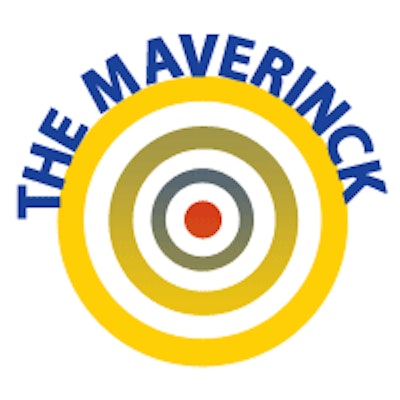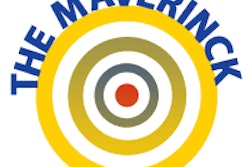
Printed medical textbooks are dead, e-publishing is the future. That's what some people think, but the electronic format is not always best for teaching and learning. Certain kinds of publications are appropriate for e-publications, but others need to be in print.
To use a real-life example, let me tell you about our very successful basic textbook on MRI. Since the mid-1980s, new print editions were published every four or five years. Five years ago, the sixth edition was turned into an e-learning textbook. One and a half years of demanding work resulted in a new website with about 320 pages and several hundred figures and animations. Meanwhile, two more electronic editions have followed. The print edition was translated into six languages, and the electronic version is being translated into Spanish and Chinese.
The bookshop price of a copy of the last English print version was around 120 euros. The electronic version is free because we believed that a free and easily accessible textbook would be beneficial for everybody in the field.1
In the foreword to the e-book I wrote:
We like books -- printed on paper, if possible with a beautiful hardcover binding. Thus, putting one of the standard textbooks on the Internet was a challenge for us. We hope that the looks of the real textbook have not been lost completely -- and, at the same time, that the advantages of e-learning bear fruit.
The brave new world of e-publishing
 Dr. Peter Rinck, PhD, is a professor of diagnostic imaging and the president of the Council of the Round Table Foundation (TRTF) and European Magnetic Resonance Forum (EMRF).
Dr. Peter Rinck, PhD, is a professor of diagnostic imaging and the president of the Council of the Round Table Foundation (TRTF) and European Magnetic Resonance Forum (EMRF).The reasons for the change from print to Web were the commonly heard arguments: e-books and texts are cheaper, faster, easier to make, and environmentally better. If one has an existing infrastructure to create educational material, as we had, you also need neither a publisher nor distributors -- both are very costly.
Digital publications of all kinds are taken for granted to be the concept of the future, printed books are considered outdated. However, after these last years I started wondering. Although layout and printing processes have also gone through rapid changes, the final result, the printed book, is still the same. Creating an e-textbook in HTML involves far more effort, time, and money than a printed book. Besides, hard- and software for electronic publications change every year; it's a typical unstable throwaway society technology and will remain so. Do the advantages of the final product justify a close to seven digit project budget?
An attempt to come to terms with the topic was published some time ago in the monthly Scientific American,2 and an in-depth review of printed versus electronic books was written by Valerie A. Moore as a master paper in library science in 2014.3
The lessons
What we learned the hard way was partly thrilling, partly disillusioning. First, contents and layout of a printed textbook have to be adapted for e-learning. To facilitate reading from a computer screen, sentences have to be shortened and additional paragraphs introduced. E-publications are not necessarily for simpler minds, but they are processed in different parts of the brain. Figures have to be newly fitted; scrolling pages should be kept at a minimum. On the other hand, animations and shorts videos can be added, but they are costly.
Feedback rapidly made clear what others had already described in recent years: Even with high-resolution screens, reading is more tiring and contents are forgotten faster. Reading from a screen tires one's eyes; headache, muscle tension of the neck and back, and blurred vision are typical complaints of people spending a long time in front of any screen. Users seem to screen the text, but don't read it in depth. Now and then they move to other programs, reading emails or newspapers or playing games. Their concentration is split, not focused.
Using and owning
The personal relationships to books and e-books are different. Physically, books on computer screens are temporary and bodiless. Readers might not be able to recreate the text five years from now or even tomorrow on their machines, nor on a different machine. Even on the same computer, text and figures change according to the software used. One doesn't own a textbook on a computer; usually one pays for a license to read; even if the files are downloaded they are here today, perhaps gone tomorrow. If the vehicle necessary to read the textbook breaks or runs out of electricity, the contents and notes are gone.
Books in their traditional paper style don't change, the text doesn't disappear and doesn't require a complicated carrier -- and they can easily be archived. Archiving computer files for more than a few years is difficult and expensive. Therefore a whole industry has developed around data archiving.
Differences to take into account
The human brain processes and reacts differently to printed books and to text on screens. Although the text and figures of a printed book and an e-book might be the same, the reader does not extract the same information from them.
It seems as if long texts are easier navigable when published in books. As a side effect, books allow readers to find a physical satisfaction, both haptically and tangibly, sometimes even in smells and the general craftsmanship of books. More so, books have an easier topography; their mapping is clearer for the human mind. One can go forward or backward just by flipping some pages. People easily lose the overview of the entire book when it is turned into an e-book.
Which medium is best?
There is a multitude of studies from all over the world examining and highlighting people's likes, dislikes, and objections to certain aspects of reading texts from computer screens. Of course, most of the responses researchers got were subjective, for example that many people consider reading and learning from a book as more serious than reading a text on an e-reader, tablet, or regular laptop or desktop. However, can one really play one medium off against another?
Valerie A. Moore summarizes in her thesis:
Some readers seemed more likely to trust information they read in print than in electronic form. Print's immutability and material stability helped reassure them that the information could not be altered surreptitiously and would be accessible in the future.
Print was preferred for reference materials or "heavier" reading by some as well, primarily due to its physical structure that allowed readers to flip back and forth through the pages ... The focus inherent in print's self-contained pages, too, facilitated learning.
For others, however, the immediate access to supplementary information enhanced their ability to learn, so they preferred digital text for serious reading.
In this context, however, it is interesting to observe that paper use has increased nearly linearly during the last 30 years. To not lose the information, people print notes, e-mails, protocols, all kinds of text they see on their screen. The "paperless office" has turned into a fairy tale.
Similarly, sales of printed book versions of both fiction and nonfiction books are said to rise after people have read parts of e-books.
Personal conclusions
What consequences did we draw from our observations? Certain kinds of publications seem to be appropriate for e-publications, others rather for printed publications. E-publishing is popular and fashionable. Yet, it's questionable whether it fulfills its declared objective in teaching and learning. What is and will be the best vehicle for certain reading and teaching/learning applications remains unclear at present. The professor/teacher plus textbook combination is proven over centuries, in particular if both professor and book are good.
For the very limited sector of scientific textbooks it is clear that people don't read them entirely on screen to acquire fundamentals of a certain topic. After following more than half a million page clicks over a continuous period of time, I clearly understand that, in this case an MRI e-textbook -- and most likely other e-textbooks too -- are not used for in depth learning.
Will we go back to a printed version of the MRI textbook? Perhaps. But only parallel with the (or an) e-version. It's also a question of price, both in production and for the reader, as well as of readers' reactions and feedback.
To give this column an electronic touch at the end: There is a beautifully Spanish-made video about books.4 It's short. You should watch it.
Dr. Peter Rinck, PhD, is a professor of diagnostic imaging and the president of the Council of the Round Table Foundation (TRTF) and European Magnetic Resonance Forum (EMRF).
References
- Rinck PA. Magnetic Resonance in Medicine. The Basic Textbook of the European Magnetic Resonance Forum. 8th ed. 2014. E-version 8.9 (April 2015). www.magnetic-resonance.org
- Jabr F. The reading brain in the digital age: The science of paper versus screens. Scientific American. 11 April 2013.
- Moore VA. Public perception of the differences between printed and electronic books: A content analysis. A Master's Paper for the M.S. in L.S. degree. November 2014. University of North Carolina at Chapel Hill.
- Did you know the BOOK? Spanish with English subtitles. www.youtube.com/watch?v=YhcPX1wVp38
The comments and observations expressed herein do not necessarily reflect the opinions of AuntMinnieEurope.com, nor should they be construed as an endorsement or admonishment of any particular vendor, analyst, industry consultant, or consulting group.



















